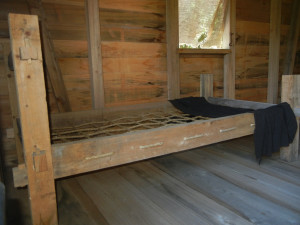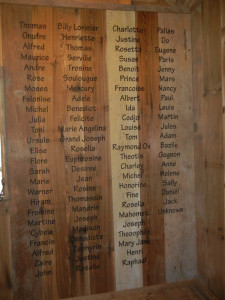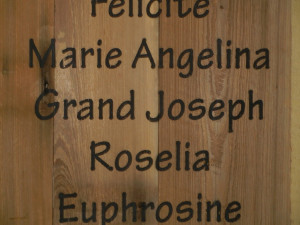Slavery in Louisiana
While touring Oak Alley, we also got to see replicas of slave cabins and to learn a little bit about the life of slaves.
I didn’t realize that a hierarchy existed among the slaves. House slaves had better clothing, which I expected, but they also had better quarters. This photo shows the bed included in the quarters of a house slave. Field slaves did not have this luxury and slept on some sort of pallet.
Of even more value to their owners were the craftsmen slaves: blacksmiths, masons, ferriers, and more. These brought the highest prices.
It was very sobering to see a wall with the names of all the slaves ever to live at Oak Alley.
The list was actually pretty short because the plantation wasn’t established until around 1845. Still, there were 57 people, known only by their first names, who suffered and served there.
On a slightly happier note, the exhibit also explained a little about the lives of former slaves immediately after they were freed. Things changed very slowly.
In Louisiana free women who were former slaves were required to wear tignons, a sort of wrapped head dress. Although this was meant to be an insult to these women, they made it their own by adding feathers and other embellishments.
I found all of this very interesting. Growing up in the south, the lives of the slaves and the conditions of slavery were somewhat glossed over in school. I was glad to learn a little more.
Ellen Lindner



